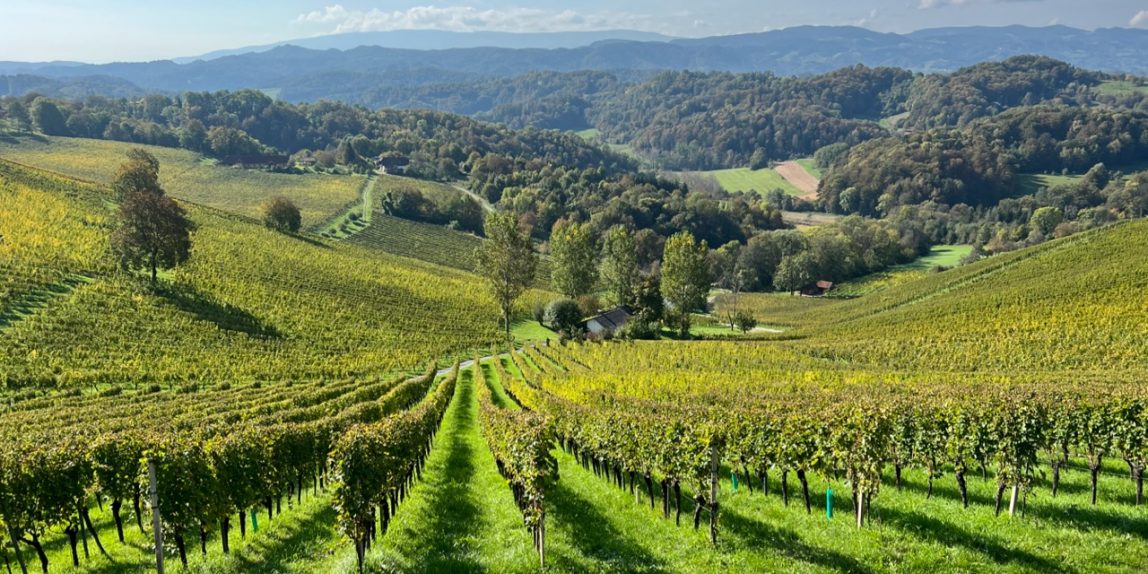Right across the road from Slovenia, in the far south of Austria’s Styria, two brothers manage the family’s winery and vineyards of 110ha, an almost 600.000 bottle/year production with 35 permanent employees in the cellar, tasting room, in the vineyards and in the adjacent hotel. 60% of their wine production is Sauvignon Blanc, and much smaller proportions of Welschriesling, Morillon (the local name for Chardonnay), Pinot Blanc, Muskateller and tiny amounts of red varieties including Pinot Noir and Sankt Laurent. While they yield only around 5t/ha as a lot of manual work is required in the hills with up to 70% incline, they are also known for extremely long aging on the lees: they let their wines rest and settle in barrels for up to 30 months. Stefan and Armin do not filter their wines, yet they are crystal clear. They rely on spontaneous fermentation only, and practice biodynamic farming. The benefits of the dense soil, Opok, that is specific for the region, formed from former muddy sea beds and limestone, sand and gravel, and the wet weather with long indian summers bring unique flavor profiles. At a pH that Armin and Stefan never measure, but estimate at 3,1, their wines are juicy and mineral-driven, slightly salty and straightforward at the same time, while having huge aging potential. The brothers are taking the family’s winery to the next level, constantly stepping up their work in the vineyard and the cellar.
Their smaller Domaine Ciringa is across the road, already in Slovenia.
I took the rare opportunity to interview Armin and Stefan together after 10,5 marathon days of harvest.
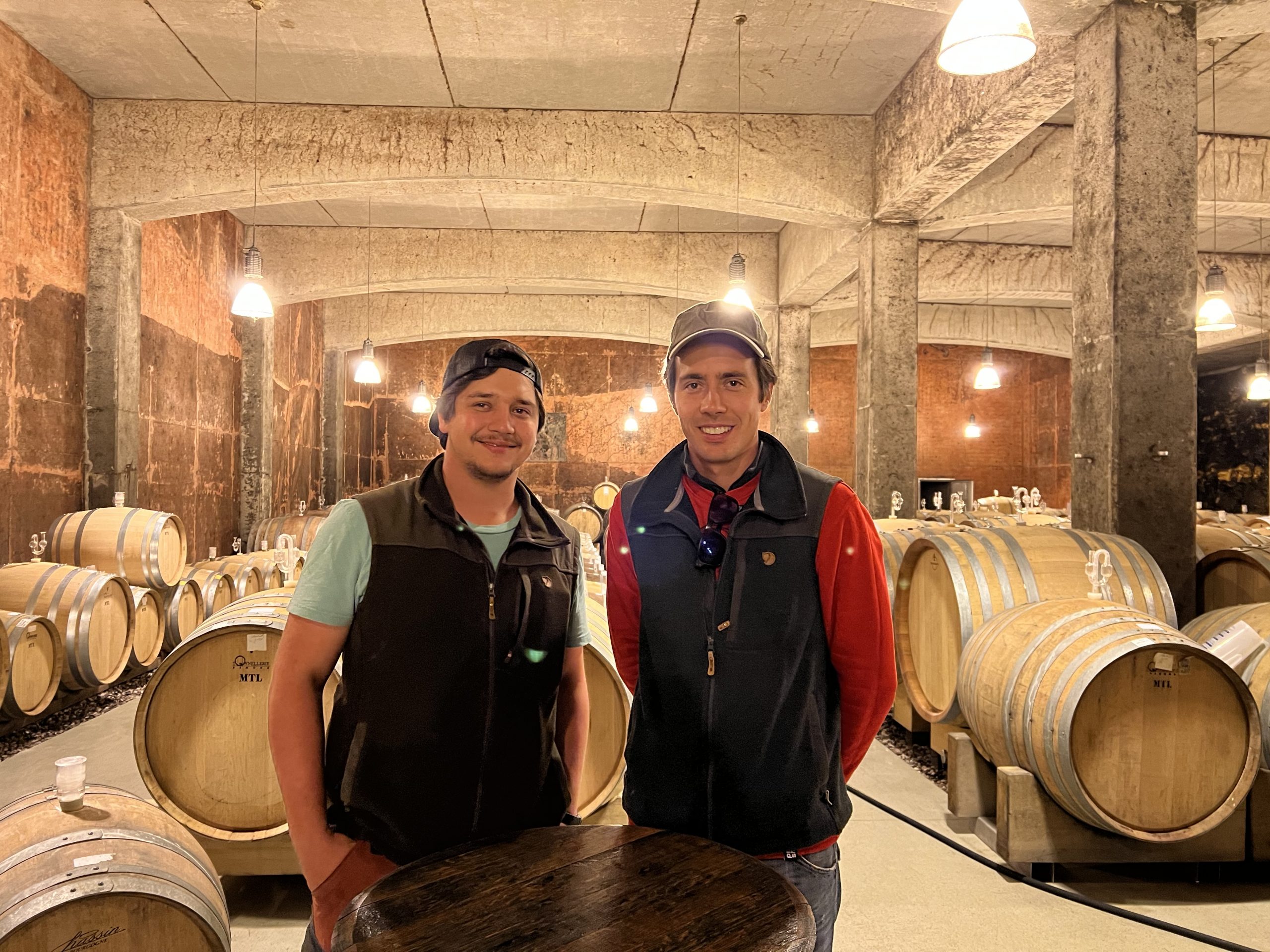
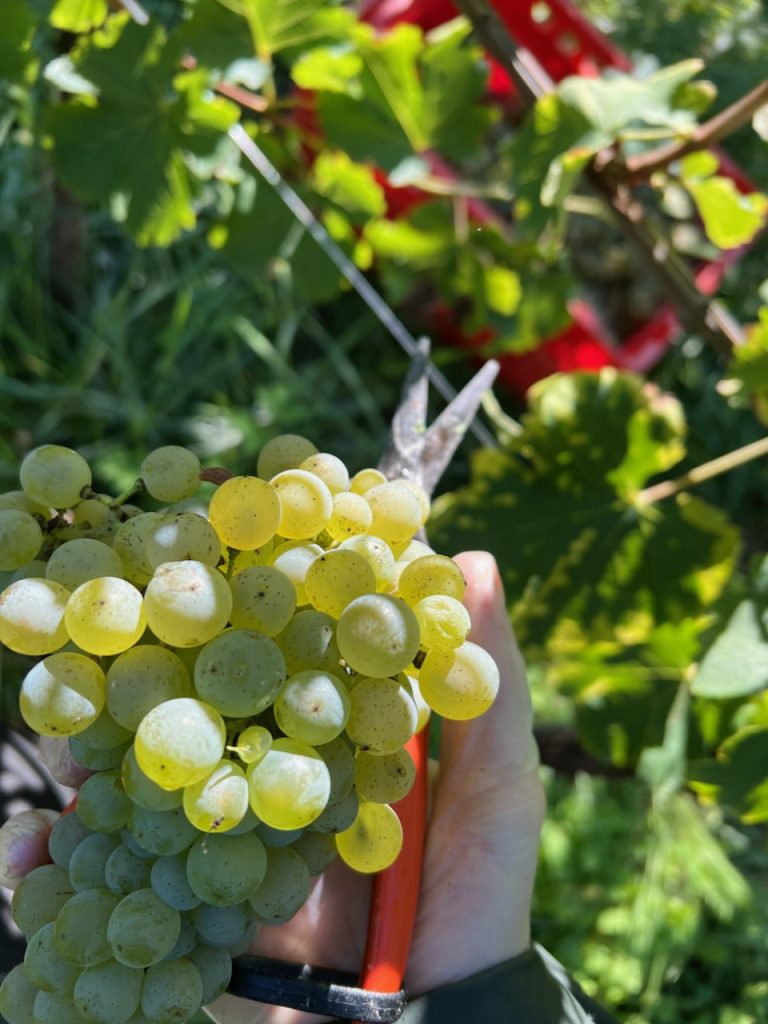
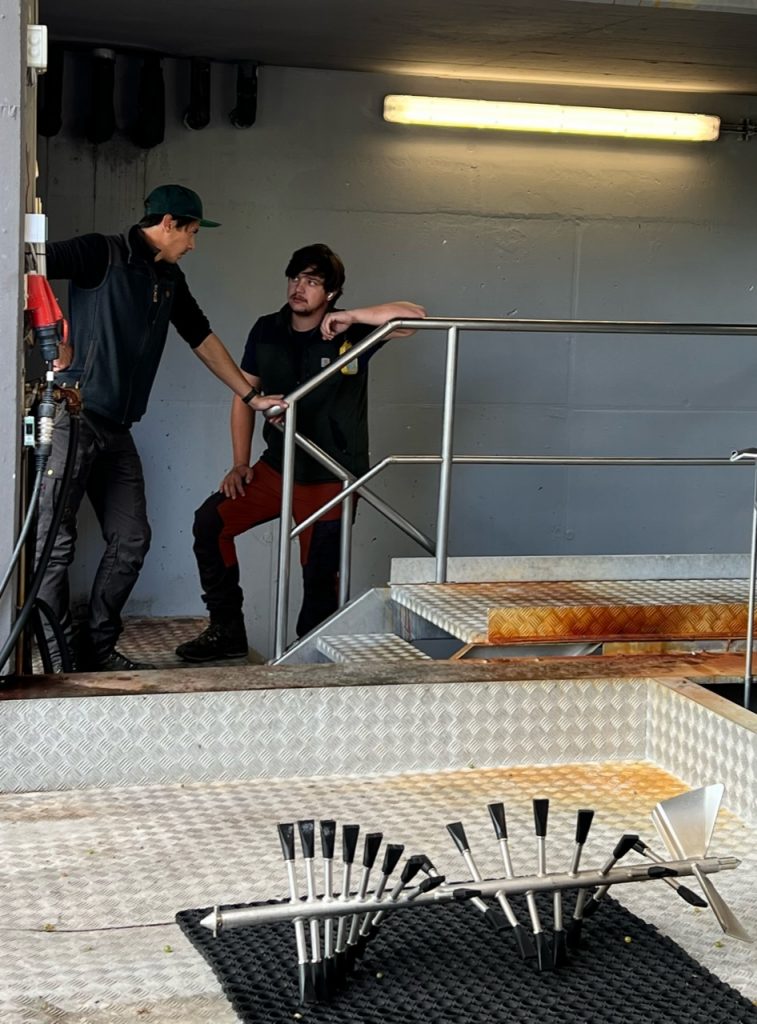
[English below]
Ich habe euch ja jetzt länger beobachtet bei der Arbeit.
Was ist die eine Sache, bei der ihr froh seid, wenn sie der andere macht?
Stefan: Interviews. lacht
Wie teilt ihr sonst eure Aufgaben auf?
Armin: Wenn beide da sind, machen wir beide alles.
Und was macht den Tement-Stil aus?
Armin: Der Tement-Stil ist sicherlich sehr prägnant, intensiv. Wenn man eine Vorstellung hat, was unsere Lagen, Weinberge ausmacht, was die Menschen dahinter auszeichnet, was den Jahrgang auszeichnet, dann hat man eine spezielle Vorstellung, und das spürt man dann glaub ich auch sehr im Wein.
Wie ist denn euer Terroir und was macht das mit den Weinen?
Stefan: Es gibt sicher nicht viele Regionen, wo man so gute Böden hat, die von Natur aus so ein gutes Wachstum geben. Viel Humus, und das zusammen mit den Kalkböden. Das, gemeinsam mit extremem Wetter, feucht warmem Klima, extrem vielen Niederschlägen – da spürt man einfach, dass das total hinundhergerissene Weine sind.
Die Kombination von Wetter und Böden, das Kleinklima, das ermöglicht ja von Natur aus sehr viel natürliche Frische in den Weinen zu haben. Das ist auch, weswegen die Weine mit sehr wenig auskommen können.
Ihr arbeitet ja auch teilweise mit extrem langem Hefelager. Was macht das genau?
Armin: Auf der einen Seite hat man einen natürlichen Reifeprozess im Wein. Und wenn du ohne Filtrationen und so weiter arbeiten willst, dann nimmt sich der Wein irgendwann die Zeit. Wir sind langsam immer mehr in der Lage, diese Länge den Weinen zu geben. Schlussendlich gibt es für jeden Wein ein Optimum – das ist nicht jedes Jahr gleich, da braucht ein Wein vielleicht mal länger und mal kürzer. Aber das gibt Sicherheit und Stabilität. Dann kannst du mit weniger Schwefel auskommen, und holst den Wein eigentlich schon so auf die Flasche wie du ihn selber gern siehst.
Macht ihr Experimente dieses Jahr?
Stefan: Experimente gibts in dem Sinne keine. Das ist eine Step-by-Step Entwicklung. Man versucht halt alles immer etwas besser zu machen.
Armin: Wo man gesehen hat, das hat gut funktioniert, da geht man weiter, und schaut wie es kommt. Alles kannst du sowieso nicht planen. Die zehn Monate, die du im Weingarten arbeitest – da machst du eh alles.
Ihr habt ja relativ klein angefangen, seid jetzt auf 110 Hektar gewachsen – und seid biodynamisch. Wie passt das zusammen?
Armin: Das war schon wirklich ein langes Ziel, dass man in diese Richtung geht. Der Aufbau war vor allem das, was die Eltern erarbeitet und geleistet haben. Sie haben Weingärten neu gepflanzt, die richtigen Sorten auf dem richtigen Boden. Und wir haben die gute Lage, dass wir eigentlich aus dem Vollen schöpfen können und nur eigene Weingärten bewirtschaften. So war auch der Umstellungsprozess auf biologisch und jetzt sind wir schon seit einigen Jahren dabei, auf biodynamische Bewirtschaftung umzustellen. Das ist eine ständige Entwicklung: Gutes beibehalten, Schlechtes weglassen.
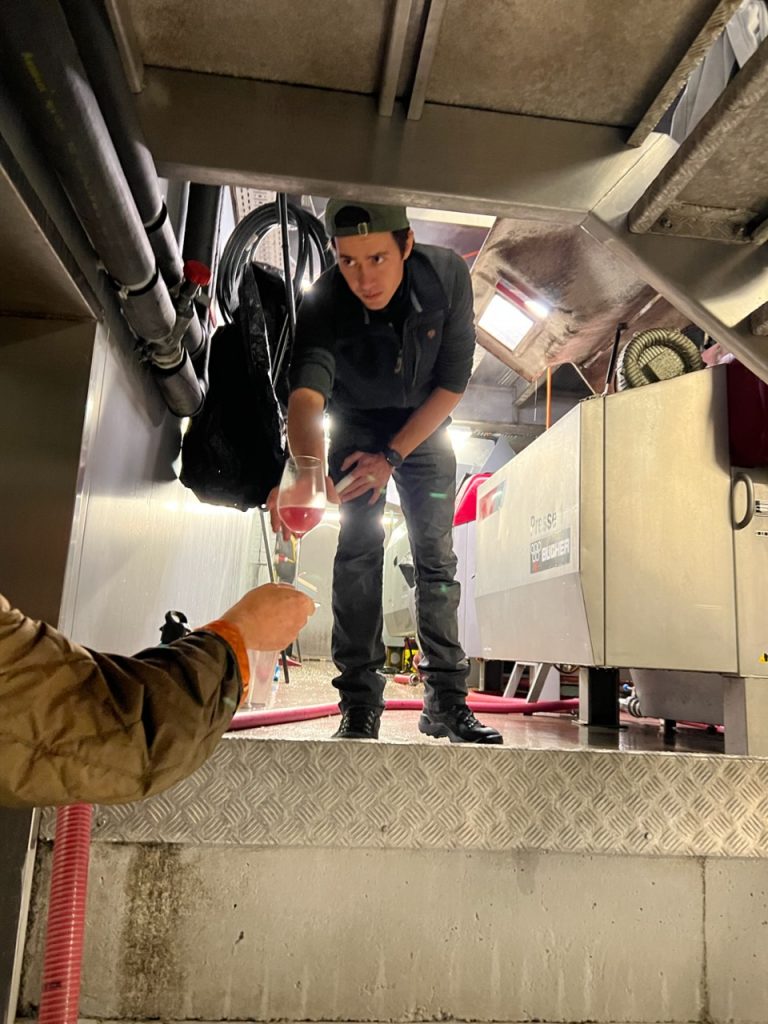
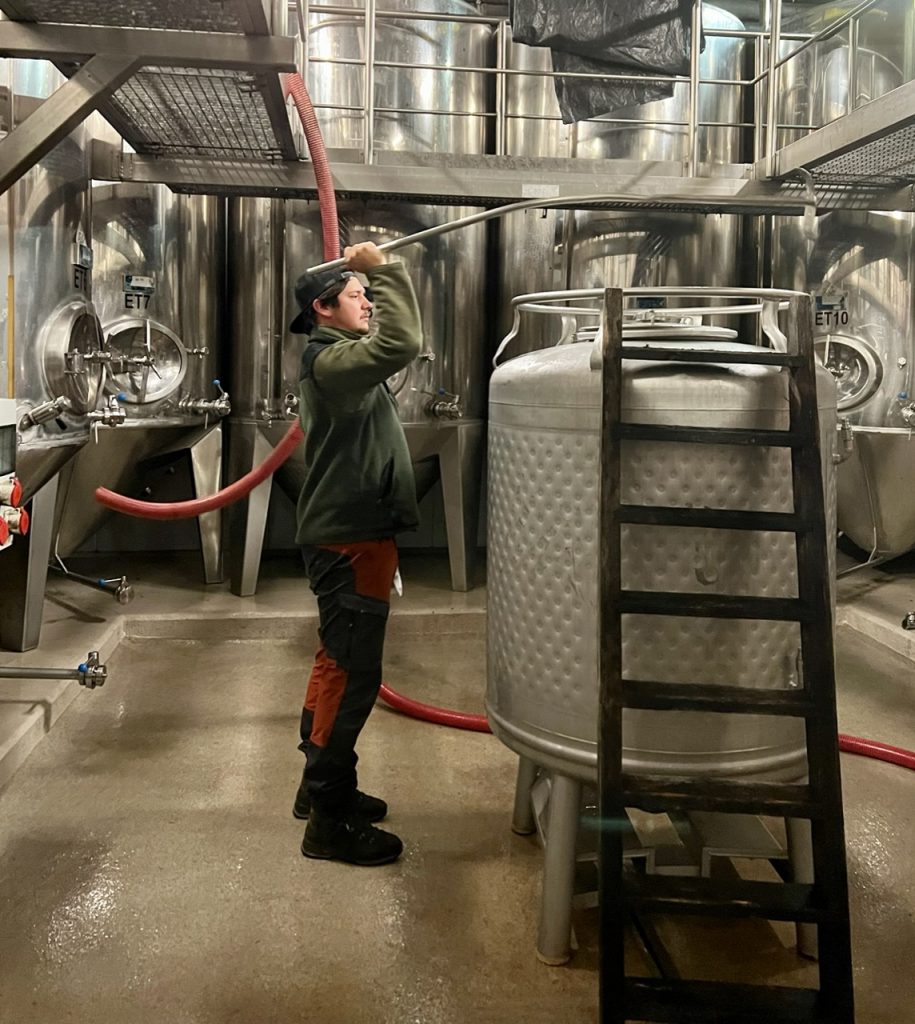
I’ve been watching you guys at work for a while now.
What’s the one thing you’re happy for the other one to do?
Stefan: Interviews. laughs
How do you divide up your tasks?
Armin: When they’re both there, we both do everything.
And what makes up the Tement style?
Armin: The Tement style is certainly very concise, intense. If you have an idea of what makes our sites and vineyards special, the people behind them, what distinguishes the vintage, then you have an idea of the style, and I think you can feel that very much in the wine.
What is your terroir like and how does it influence wines?
Stefan: There are certainly not many regions where you have such good soils that naturally give such good growth. Lots of humus, and the limestone soils. That, with extreme weather, warm, humid climate, extremely high rainfall – you can just feel that these are totally torn wines.
The combination of weather, soils and also our microclimates naturally brings a lot of freshness to our wines. That’s why our wines can get by with so little, when we let them.
You also age some wines extremely long on the lees. What does that do exactly?
Armin: On the one hand, you have a natural maturation process in the wine. And if you want to work without filtrations and the likes, the wine will take its time. And we have more and more possibilities to give that length to the wines. In the end, there is an optimum for every wine – it’s not the same every year, so a wine may need longer and sometimes shorter. But that gives security and stability. Then you can get by with less sulfur, and actually bottle the wine the way you like to see it.
Are you doing any experiments this year?
Stefan: There are no experiments in that sense. It’s a step-by-step development. You just always try to make everything a little better.
Armin: What you have seen worked well, you continue and see where it takes you. You can’t plan everything anyway. The ten months of work in the vineyard – there you do all you can anyway.
You started relatively small, but have now grown to 110 hectares – and are biodynamic. How does that fit together?
Armin: That’s been a goal for long, to go into that direction. The winery build-up was mainly what our parents worked on and accomplished. They replanted vineyards, the right varieties on the right soil. And we are in the benefitial situation that we can actually draw from the full and manage only our own vineyards. So was the conversion to organic farming, and now we have been in the process of converting to biodynamics for several years. This is a constant development: keep the good, leave out the bad.
